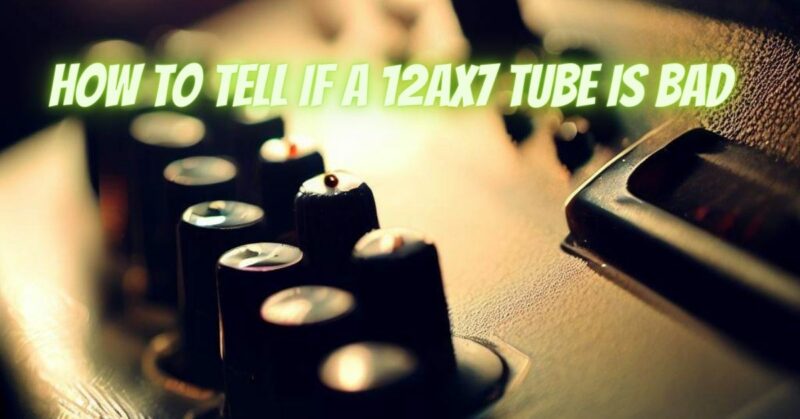The 12AX7 tube, also known as ECC83 in Europe, is one of the most commonly used preamp tubes in tube amplifiers. It plays a critical role in shaping the guitar’s tone and overall sound quality. Over time, 12AX7 tubes can wear out and affect the performance of your amplifier. Recognizing the signs of a bad 12AX7 tube is essential for maintaining optimal sound and identifying when replacement is necessary. In this article, we’ll explore the signs that indicate a 12AX7 tube is bad and how to assess its condition.
- Diminished Sound Quality
The most apparent sign of a bad 12AX7 tube is a decline in sound quality. Listen for the following audio anomalies:
a. Muddy or Dull Tone: A worn-out 12AX7 tube can result in a muddy or dull sound, lacking clarity and definition.
b. Loss of Dynamics: A bad tube may reduce the dynamics of the guitar’s sound, leading to a less responsive and expressive playing experience.
c. Excessive Noise: Faulty 12AX7 tubes can introduce unwanted noise, including hiss, crackling, or popping sounds, into the audio signal.
- Microphonic Behavior
Tap test your 12AX7 tubes gently with a pencil or non-metallic object while the amplifier is on and operating at a low volume. If you hear any unusual noise or ringing that is excessively amplified through the speakers, it may indicate a microphonic tube. Microphonic behavior can be a sign of a tube with internal mechanical issues.
- Visual Inspection
Visually inspect the 12AX7 tubes for any physical signs of wear or damage:
a. Darkened or Discolored Glass: Darkening or discoloration of the glass envelope can be an indicator of a failing tube.
b. White Spots: White deposits on the inside of the tube, known as “white spots,” can suggest tube deterioration.
c. Red or White Hot Spots: During operation, check the tubes for any red or white hot spots on the plates, which may indicate an issue.
- Swap Tubes
Swapping the 12AX7 tube with a known-good tube can help identify if the problem lies with the tube itself or elsewhere in the amplifier. If the issue persists after swapping, the problem likely lies elsewhere. If the problem is resolved, the original tube may be faulty.
Recognizing the signs of a bad 12AX7 tube is crucial for maintaining the optimal performance and sound quality of your tube amplifier. Diminished sound quality, microphonic behavior, and visual indications of tube wear are all signs that a 12AX7 tube may need replacing. Regularly inspecting and monitoring your tube amplifier’s performance will help you catch tube issues early and ensure that your amplifier continues to deliver the warm and rich sound that tube amplifiers are loved for. If you’re uncertain about tube replacement or lack experience in handling electronics, seeking the assistance of a qualified technician can help ensure accurate tube evaluation and successful tube replacement.


